This one was inspired by a question on Reddit. Someone was wondering how much truth there was to pâte à choux being from the 1540s. So I looked it up, and lo and behold there it is in 1604’s Ouverture de Cuisine. Being only
four years past the 16th century I think it’s safe to say that it’s a 16th century recipe. I looked a little further and found a Scappi recipe as well, from 1570, though it’s a bit different. But close enough to say that the rumors of it being invented in the 1540s are quite likely.
Now neither of the recipes are modern choux pastry but they do seem to use the same high moisture content raising method.
French Versions
To make Agnoilen
Make paste with cream & butter, & put to boil together, then cast flour therein, that is on the fire, then take four eggs, & beat them well in the past before the fire until they are well done, then take another two or three eggs, & beat them well like the others: then take a good handful of grated parmesan, & mix with the paste, & make long rolls as thick as your thumb, then cut into little pieces like little acorns, & put to boil in fat broth, & put them on a plate in twenties, & put thereon parmesan & cinnamon like raviolis.
This one seems to be a choux pastry which then has Parmesan cheese added in until it becomes a dough instead of a thick batter. It’s reminiscent of Gougeres except that it’s a bit more doughish and instead of baking them you’re boiling them in stock which makes me think they’ll end up more like a Parisian gnocchi.
To make good pastry for doughnuts or fritters
Take a sopine of cream, & put it to boil in a pail with a little butter, then take white flour, & make paste therein the pail over the fire, when it is well mixed with a wooden spoon, then break four eggs therein, & beat well with the spoon, when the eggs are well addled into the paste,
then take another four eggs & beat them again until the paste is soft like thick porridge, as many eggs as needed to make the paste soft enough, then take butter well boiled to remove the salt, then put the butter over the fire until it is a little hot, then take the paste with a silver spoon as large as a gall, and drop into the butter, eighteen or twenty at a time, & turn them with a skimmer, & let them cook until the paste sticks together, & tear it apart, & if you see that the paste goes back, it is not done enough, put it back again therein until it is done enough.
This is more of a traditional choux pastry and it’s fried like a French beignet. As you may have noticed both recipes use cream instead of water as the modern version normaly does. This will cause three things: “a (slightly) lower rise, a (slightly) more tender texture and a (noticeably) darker crust.”
Now modern choux pastry has a standard ratio as explained here from The Flavour Bender.
Michael Ruhlman’s ratio by weight for choux pastry is 2:1:1:2 of water, butter, flour and eggs. While this works well, I found that adding a little extra flour (when using AP flour) helps make the choux pastry that much more crisp – a very desirable result.
But since we’re using cream and not water we’re going to tinker with that and cut down the butter a little and up the flour a little, this might crash and burn but it’s worth a shot. Our ratio is 3:1:2:3. An egg weighs about 60 grams which gives us the recipe (technically a half batch from the period recipes)
French Pastry
- 180 g cream
- 60 g salted* butter
- 120 g flour
- 180 g egg (about here large eggs)
- Pinch of salt
*Note from some other research I’ve been doing butter at this time was heavily salted. Whenever you see a recipe that doesn’t call for salt but does call for either butter or bacon you can assume that you need to add extra salt, even if you’re using salted butter.
- Heat the cream and butter till it begins boiling
- mix in the flour, and keep it on the heat
- Once it is fully mixed your spoon should be able to stand up in it
- Add one lightly beaten egg at a time mixing to incorporate it fully before adding the next
- Drop spoon sized pieces into hot butter to fry, flipping after five minutes
- Remove once browned and drain on a cloth.
- Optional (from the Italian recipe): dust with powdered sugar
Note: you can instead add grated Parmesan cheese after the eggs and roll and slice it before boiling it in chicken or beef stock (this is 16th century France so don’t use pork or mutton stock) and serve them as Parisian gnocchi.
- Butter and cream
- Butter for frying
- Ok this is not a health food
- The flour incorporates quickly, but keep it on the heat, you’re actually cooking the flour here
- My spoon’s standing straight up without me holding it now just as we’re told
- Beating in eggs
- Such a smooth batter
- Frying them in butter, it called for clarified butter but I didn’t have any on hand, clarified would have made it easier
- First batch
- Second batch
- Dusted liberally with sugar
An Italian Take
This of course isn’t just a French thing. Here’s the Italian version from Scappi:
To make various sorts of fritters Venetian fritters (Chapter 136, page 370)
Boil six lb of goats milk in tinned casserole, with 6oz fresh butter, 4oz sugar, 4oz rose water, a little saffron and enough salt. When it boils add in 2lb flour little by little. Mix continuously with a wooden spoon until it becomes stiff like bread dough. Take it from the casserole and put it into a stone mortar and pound it for a quarter of an hour. Then take it out and put it into a bowl of copper or of ceramic, mix it with a wooden spoon or with a hand until it chills. Then have 24 fresh eggs and put them in one by one, mixing continuously with the wooden spoon or with the hand until the paste because liquid and beat for a quarter of an hour until it makes blisters (bubbles?) and leave it to rest for a quarter of an hour in a warm place then beat again. Then have ready a frying pan with hot lard, and take the mixture and put it over a plate and with the mouth of a bottle well greased with cold lard or
with a cane of white iron cut the fritters and put them into the lard and give them gentle heat, and several times move the pan making the fritters dance in the lard without touching (each other) and when the fritters begin to be cooked they will crack, because by nature they puff up and become like medlars. Many times one will see that they have taken enough color and they are light, take them out with a slotted spoon and serve them hot with fine sugar on top. With this paste one can make various works with the syringe (pastry bag) but it should be somewhat thicker than that used for fritters if one wants to make them better with the syringe. Let them bake for half an hour in an oven which is not too hot and serve them with fine sugar on top.
If you’re wondering that recipe works out to (once dividing by 7 so it’s not quite as big of a recipe:
- 388 g goats milk
- 24.3 g butter
- 16 g sugar
- 16 g rose water
- 129 g flour
- 3-4 eggs
By ratio that’s 16:1:6:8 (putting sugar with flour and rose water with goats milk) or to put it in perspective of just how much goats milk is in it 2:1/8:3/4:1. However it does give the added suggestion of baking the pastry as opposed to the French version which does not. It’s interesting to note that Scappi asks for both fresh butter (unsalted) and salt, bolstering my guess that the heavily salted/preserved butter brought a lot of the salt content to dishes, hence not adding salt when using butter unless it’s fresh butter.
The ratio I used was 3:1:2:3 which is in fact a 7:2 liquid to solid ratio. By comparison the 16:1:6:8 recipe proposed by Scappi has an 8.3:2 ratio of liquid to solid so it’s only slightly more liquid (primarily from the goats milk). My next attempt will be with the Scappi recipe and using a pastry bag as he recommends.
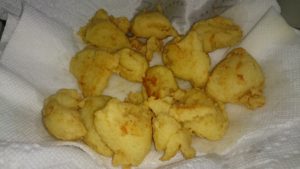
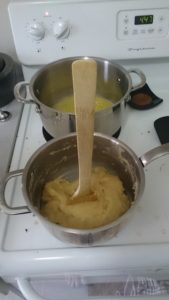
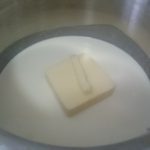
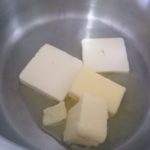
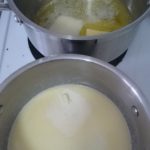
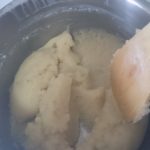
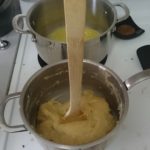
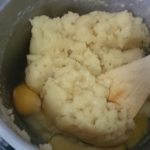
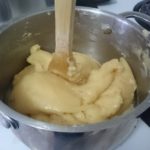
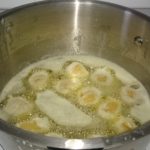

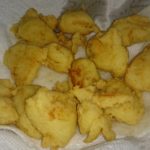
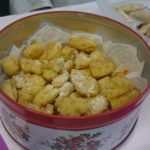
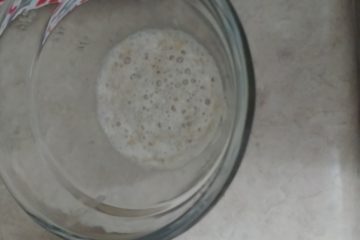
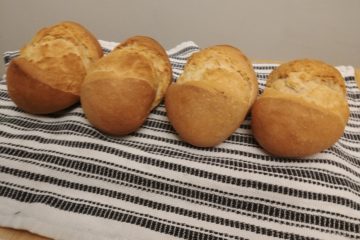
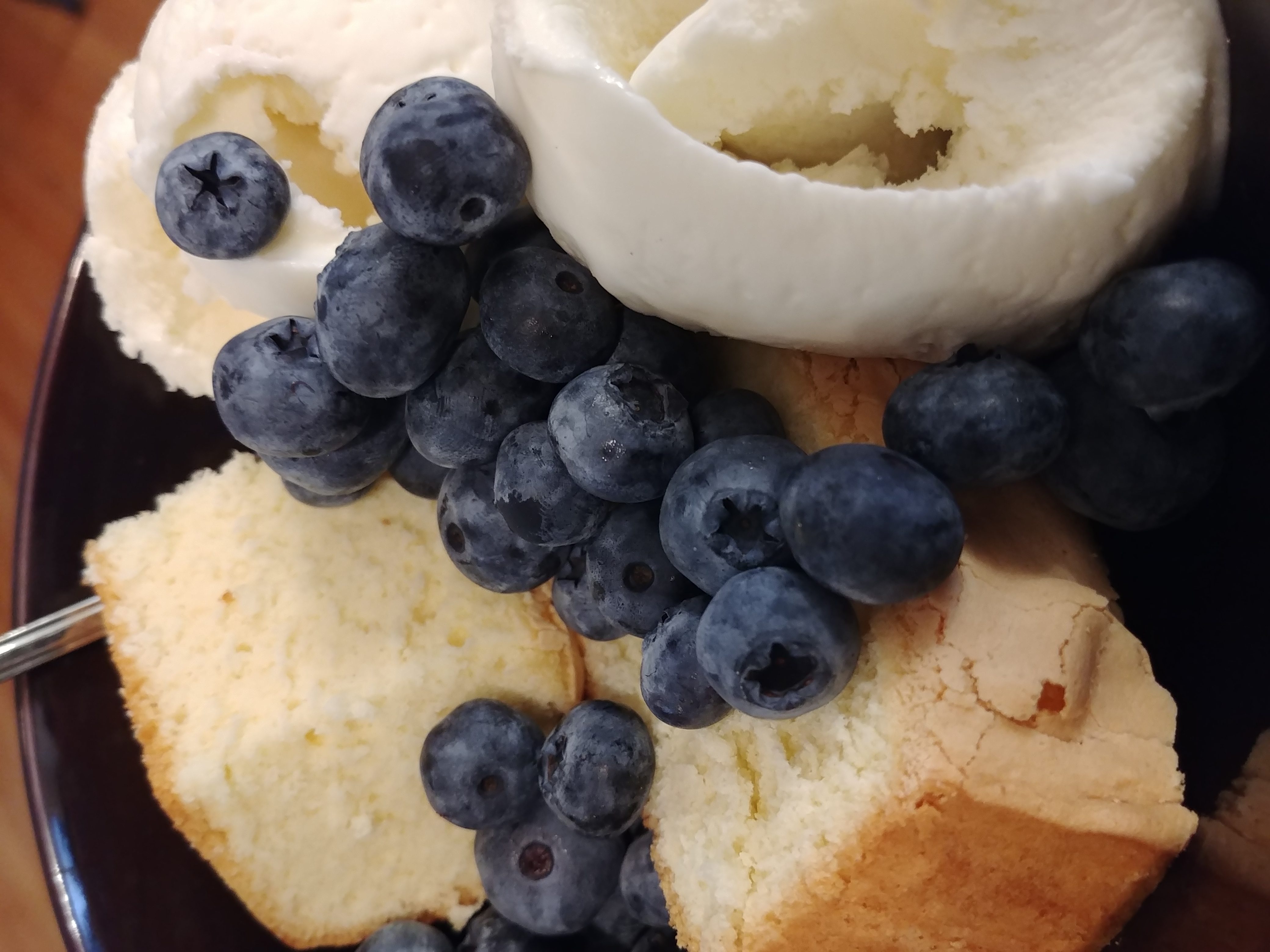
You must be logged in to post a comment.